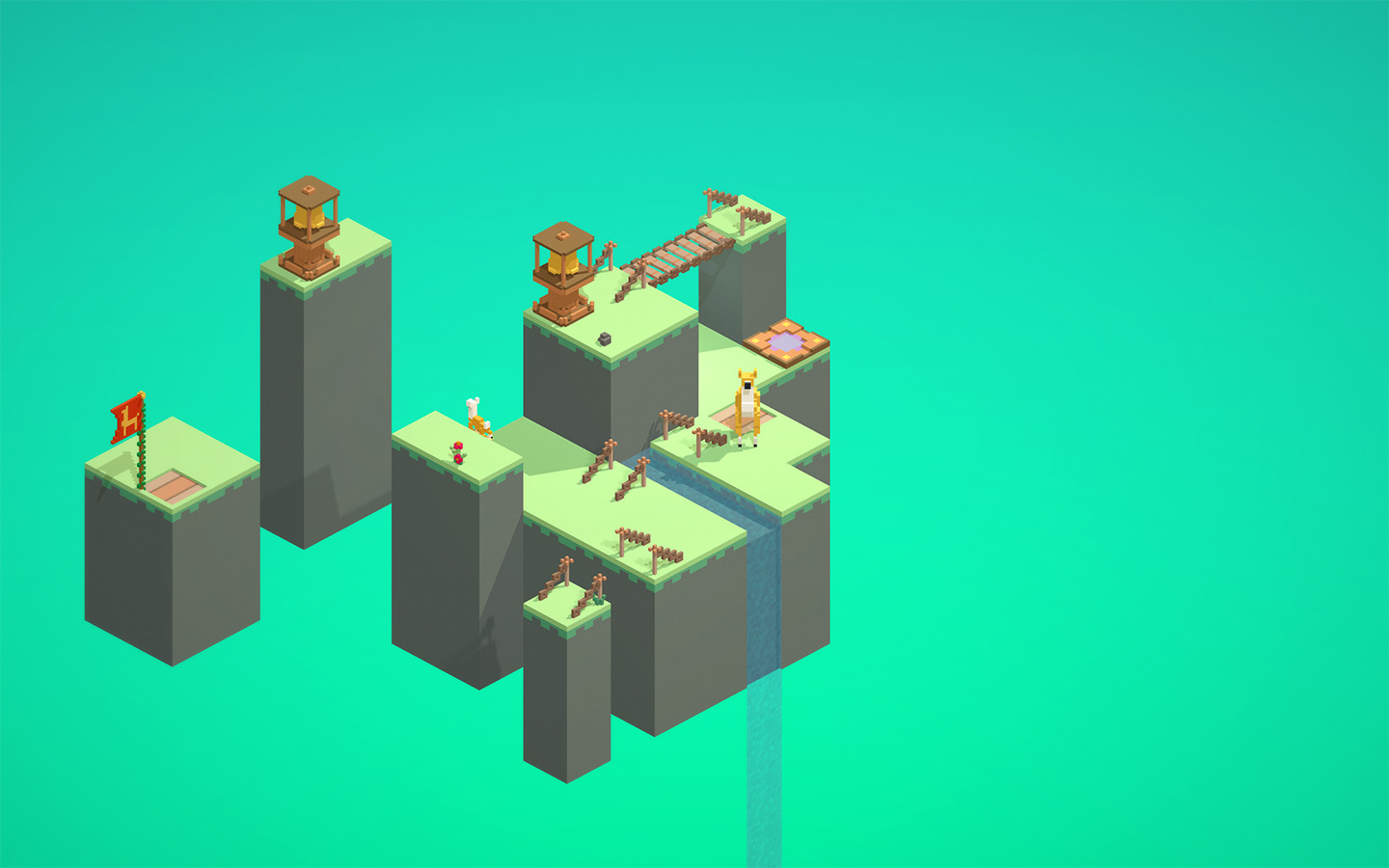↼ back to gamedev home
 A level within Interdimensional Llama, viewed in 3D mode.
A level within Interdimensional Llama, viewed in 3D mode.
Our team roles were deliberately loosely defined for each person - the paper was a collaboration with the Computer Science and Music schools, but the Media Design students (myself included) wanted to get involved in the coding and the Computer Science students wanted to get involved in the design. I mostly did level and environment design and animation; the game's voxel-inspired art style meant we had to create a workflow between Qubicle (a voxel-based 3D modelling software), Autodesk Maya, and Unity. Models were first created in Qubicle, then imported to Maya and animated, and finally imported into the game's Unity project.
Most of the animations in the game were intentionally kept simple (part of an object rotating or moving in a straight line), but Lou's animations required a bit more complexity. This is the main reason why I said "voxel-inspired" in the previous paragraph: Lou was animated within Maya so the voxels in his model (most notably his knees) got bent and warped. Admittedly, this was mostly for simplicity - I'm sure we could have come up with a more stylistic approach given enough time and resources - but I ended up quite liking the end result and its oddly strained relationship with the standard voxel grid.
Interdimensional Llama
In 2016, for one of my university papers, we were organised into groups and tasked to make a "vertical slice" of a video game in Unity. Each student pitched a game concept to the rest of the cohort, and then compiled a list of the games they'd most like to work on, and teams were formed to work on the most popular pitches. I ended up on my first choice, a game about a llama called Lou with the ability to travel through the game world in either two or three dimensions. A level within Interdimensional Llama, viewed in 3D mode.
A level within Interdimensional Llama, viewed in 3D mode.
Our team roles were deliberately loosely defined for each person - the paper was a collaboration with the Computer Science and Music schools, but the Media Design students (myself included) wanted to get involved in the coding and the Computer Science students wanted to get involved in the design. I mostly did level and environment design and animation; the game's voxel-inspired art style meant we had to create a workflow between Qubicle (a voxel-based 3D modelling software), Autodesk Maya, and Unity. Models were first created in Qubicle, then imported to Maya and animated, and finally imported into the game's Unity project.
Most of the animations in the game were intentionally kept simple (part of an object rotating or moving in a straight line), but Lou's animations required a bit more complexity. This is the main reason why I said "voxel-inspired" in the previous paragraph: Lou was animated within Maya so the voxels in his model (most notably his knees) got bent and warped. Admittedly, this was mostly for simplicity - I'm sure we could have come up with a more stylistic approach given enough time and resources - but I ended up quite liking the end result and its oddly strained relationship with the standard voxel grid.